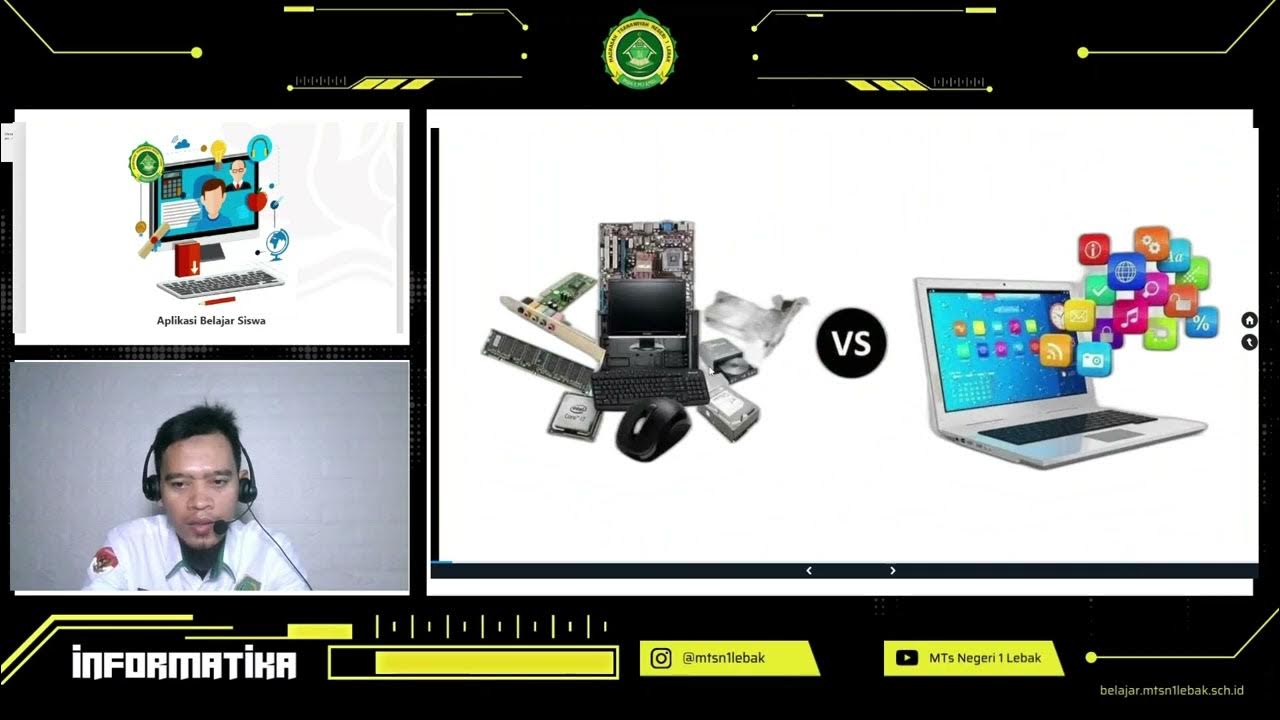ADSI, Analisis Kelemahan Sistem, Part 01
Summary
TLDRThis video offers a comprehensive introduction to system analysis and design for Information Systems students at Universitas Negeri Gorontalo. It emphasizes the importance of understanding the core problems a system aims to solve, such as ineffective communication or manual processes. The script explores methods for identifying issues, including the PIES model (Performance, Information, Economics, Control, Efficiency, and Service), and encourages a systematic approach to defining system goals and boundaries. The focus is on ensuring the system addresses real user needs, using clear definitions and analysis to design more effective, user-friendly solutions.
Takeaways
- 😀 The importance of understanding the core problem that a system is trying to solve before designing it.
- 😀 Systems are built to address real-world issues, such as improving processes, communication, or service delivery.
- 😀 Analyzing the root cause of problems (e.g., manual systems, lack of integration) is crucial before system design.
- 😀 Identifying the end users is vital in creating a system that truly meets their needs and adds value.
- 😀 Define system objectives (what it aims to achieve) and limitations (what it does not cover) clearly before proceeding.
- 😀 A clear and specific problem definition is essential, e.g., a system not updating in real time causes uncertainty.
- 😀 The PIECES method is a useful tool for identifying system problems from multiple angles: Performance, Information, Economics, Control, Efficiency, and Service.
- 😀 Identifying system issues can involve various aspects such as slow performance, inaccurate data, high maintenance costs, and user dissatisfaction.
- 😀 There are many opportunities to apply these analysis techniques to real-life issues, like mobile-friendly campus apps or integrated library systems.
- 😀 Before jumping to coding or interface design, first thoroughly analyze the problem, the user, and the system's limitations to create a more effective solution.
Q & A
What is the main focus of this video script?
-The main focus is on the identification of problems in information systems, particularly during the initial stages of system analysis before moving into the design phase.
Why is identifying the problem important before designing a system?
-Identifying the problem ensures that the system is built to address real issues and is not just created due to trends or convenience. A clear understanding of the problem allows for a more effective and user-centered design.
What is the first question to ask when starting an analysis of a system?
-The first question is, 'What problem needs to be solved with the information system?' This question aims to identify the core purpose of the system.
Can you give an example of a real-world problem that could be solved by an information system?
-An example would be the difficulty in accessing real-time updated class schedules at a university. Without an information system, students may struggle to get the latest schedule updates.
What are the common causes of problems in existing systems?
-Common causes include manual processes, lack of integration between systems, and unclear operational standards or procedures.
Why is understanding the end users critical in system analysis?
-Understanding the end users is crucial because their needs and behaviors dictate how the system should be designed. Whether the users are students, faculty, or staff, the system must be tailored to ensure it is user-friendly and beneficial.
What is the PIECES method, and how is it used in system analysis?
-The PIECES method is a framework used to analyze problems from six perspectives: Performance, Information, Economy, Control, Efficiency, and Service. It helps break down and assess different issues in a system, such as speed, data accuracy, costs, security, process efficiency, and user satisfaction.
Can you provide an example of how the PIECES method would apply to an existing campus system?
-For instance, if a campus attendance system relies on manual signatures, the PIECES method could be used to evaluate performance (slow), information (inaccurate attendance data), control (vulnerable to misuse), efficiency (time-consuming), and service (frustrating for users).
What is the difference between system goals and system boundaries?
-System goals define what the system aims to achieve, such as allowing students to view their grades online. System boundaries define what the system will not address, like excluding tasks such as re-registration or tuition payment processing.
How does the script emphasize the importance of problem identification in the system design process?
-The script emphasizes that understanding and analyzing the problem thoroughly is essential before jumping to coding or designing the user interface. A solid understanding of the problem allows for the creation of a more effective and user-friendly system.
Outlines

This section is available to paid users only. Please upgrade to access this part.
Upgrade NowMindmap

This section is available to paid users only. Please upgrade to access this part.
Upgrade NowKeywords

This section is available to paid users only. Please upgrade to access this part.
Upgrade NowHighlights

This section is available to paid users only. Please upgrade to access this part.
Upgrade NowTranscripts

This section is available to paid users only. Please upgrade to access this part.
Upgrade NowBrowse More Related Video

Analisis Kelayakan Sistem : Aspek Operasional dan Aspek Hukum

Materi Sistem Komputer - Informatika

Pengenalan Analisis dan Desain Sistem

Analisis dan Desain Sistem - PART 1 | Analisis dan Perancangan Sistem Informasi

Welcome to website of Language Laboratory PGSD FIP UNM @ https://youtu.be/XdnvguuCcyc

Studi kasus pelanggaran kode etik guru [presentasi video] SUCI RAHAYU D23020014
5.0 / 5 (0 votes)